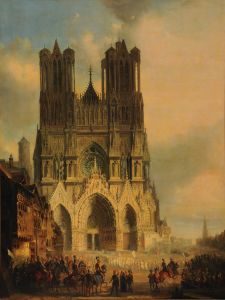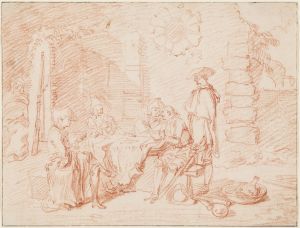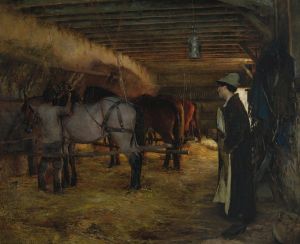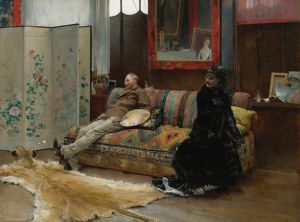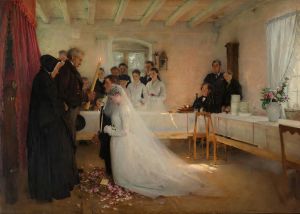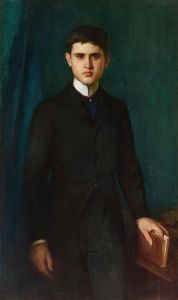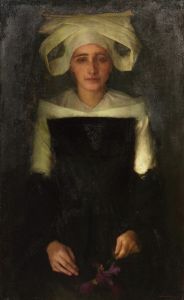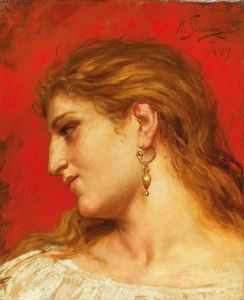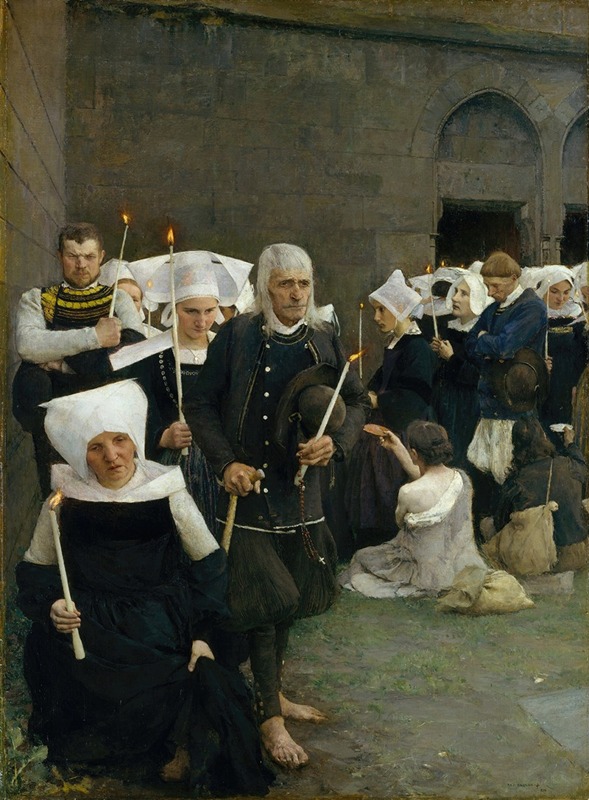
The Pardon in Brittany
A hand-painted replica of Pascal-Adolphe-Jean Dagnan-Bouveret’s masterpiece The Pardon in Brittany, meticulously crafted by professional artists to capture the true essence of the original. Each piece is created with museum-quality canvas and rare mineral pigments, carefully painted by experienced artists with delicate brushstrokes and rich, layered colors to perfectly recreate the texture of the original artwork. Unlike machine-printed reproductions, this hand-painted version brings the painting to life, infused with the artist’s emotions and skill in every stroke. Whether for personal collection or home decoration, it instantly elevates the artistic atmosphere of any space.
"The Pardon in Brittany" is a notable painting by the French artist Pascal-Adolphe-Jean Dagnan-Bouveret, created in 1886. Dagnan-Bouveret was a prominent figure in the naturalist movement, and his works are known for their detailed realism and ethnographic interest. This painting is a prime example of his dedication to capturing the cultural and social aspects of rural life in France during the late 19th century.
The painting depicts a religious festival known as a "pardon," which is a traditional Breton pilgrimage and communal event. These pardons are deeply rooted in the Catholic faith and are characterized by processions, prayers, and various religious rites. They are an essential part of Breton cultural identity and heritage.
In "The Pardon in Brittany," Dagnan-Bouveret portrays a group of Breton peasants participating in the religious ceremony. The scene is set in an outdoor rural environment, with the participants dressed in traditional Breton costumes. The artist's meticulous attention to detail is evident in the intricate patterns of the clothing and the expressive faces of the figures. The composition is carefully arranged to convey a sense of solemnity and communal devotion.
Dagnan-Bouveret's use of light and color enhances the painting's realism and emotional impact. The natural light illuminates the scene, highlighting the textures and colors of the costumes and the surrounding landscape. The artist's palette is dominated by earthy tones, which contribute to the painting's overall sense of authenticity and reverence.
"The Pardon in Brittany" reflects Dagnan-Bouveret's interest in ethnographic subjects and his commitment to depicting the lives of ordinary people with dignity and respect. His approach to this subject matter was influenced by his travels to Brittany, where he observed and sketched the local customs and traditions. This firsthand experience allowed him to create a work that is both accurate and empathetic.
The painting was well-received by contemporary audiences and critics, who praised its technical skill and emotional depth. It was exhibited at the Paris Salon of 1886, where it garnered significant attention and acclaim. Today, "The Pardon in Brittany" is considered one of Dagnan-Bouveret's masterpieces and an important example of 19th-century French naturalist painting.
Pascal-Adolphe-Jean Dagnan-Bouveret (1852-1929) was a student of the renowned painter Jean-Léon Gérôme at the École des Beaux-Arts in Paris. He achieved considerable success during his career, receiving numerous awards and honors. His works are held in various prestigious collections, including the Musée d'Orsay in Paris and the Metropolitan Museum of Art in New York.
"The Pardon in Brittany" remains a significant work in the study of French art and cultural history, offering valuable insights into the religious and social practices of rural Brittany in the late 19th century. The painting continues to be appreciated for its artistic merit and its contribution to the documentation of regional traditions.





